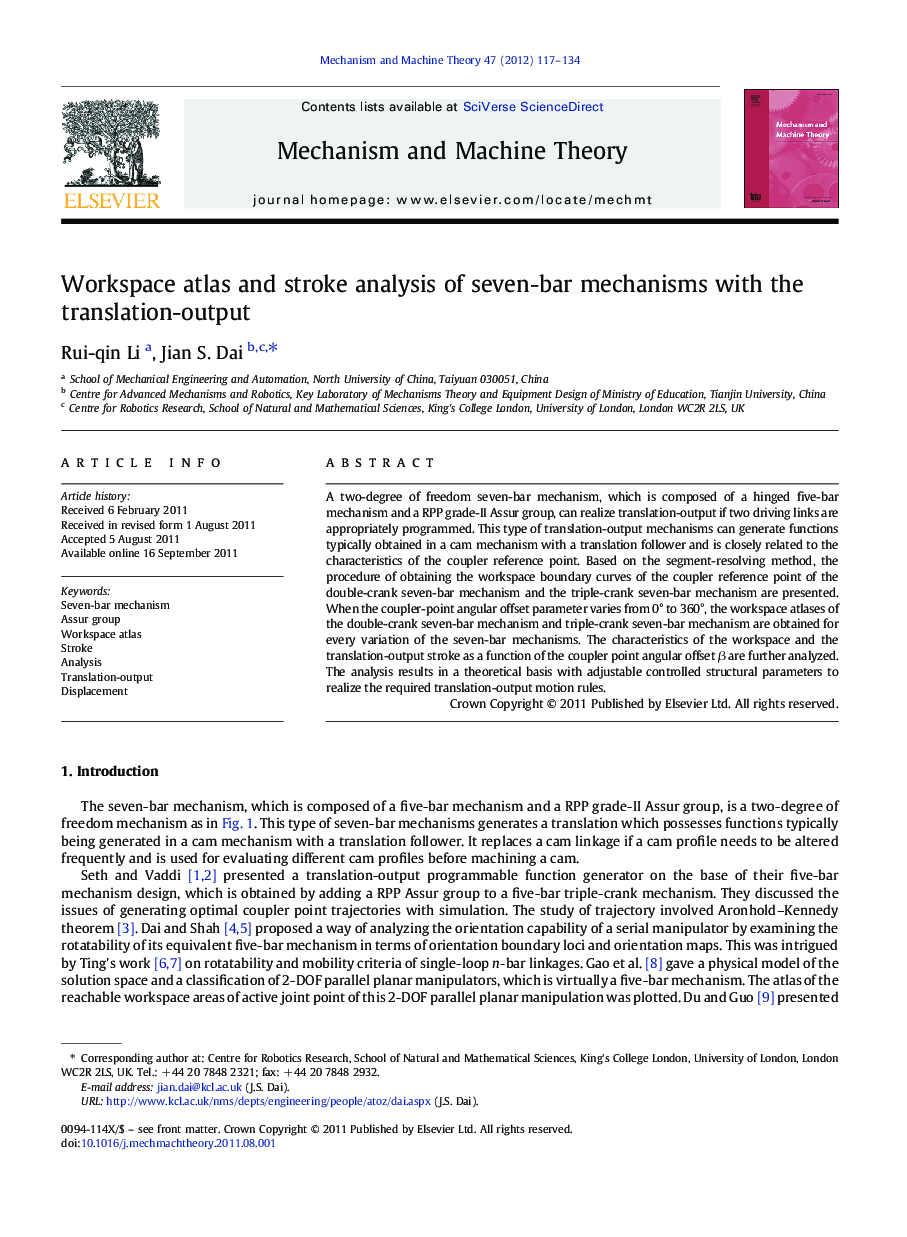| کد مقاله | کد نشریه | سال انتشار | مقاله انگلیسی | نسخه تمام متن |
|---|---|---|---|---|
| 804812 | 1467787 | 2012 | 18 صفحه PDF | دانلود رایگان |

A two-degree of freedom seven-bar mechanism, which is composed of a hinged five-bar mechanism and a RPP grade-II Assur group, can realize translation-output if two driving links are appropriately programmed. This type of translation-output mechanisms can generate functions typically obtained in a cam mechanism with a translation follower and is closely related to the characteristics of the coupler reference point. Based on the segment-resolving method, the procedure of obtaining the workspace boundary curves of the coupler reference point of the double-crank seven-bar mechanism and the triple-crank seven-bar mechanism are presented. When the coupler-point angular offset parameter varies from 0° to 360°, the workspace atlases of the double-crank seven-bar mechanism and triple-crank seven-bar mechanism are obtained for every variation of the seven-bar mechanisms. The characteristics of the workspace and the translation-output stroke as a function of the coupler point angular offset β are further analyzed. The analysis results in a theoretical basis with adjustable controlled structural parameters to realize the required translation-output motion rules.
► Present variations of the seven-bar mechanism and their linkage conditions.
► Present kinematic analysis of the translation-output motion pattern.
► Carry out stroke analysis of the translation-output motion.
► Present workspace atlas analysis.
► Study both double-crank and triple-crank seven-bar mechanisms.
Journal: Mechanism and Machine Theory - Volume 47, January 2012, Pages 117–134